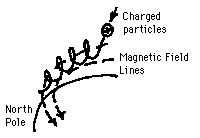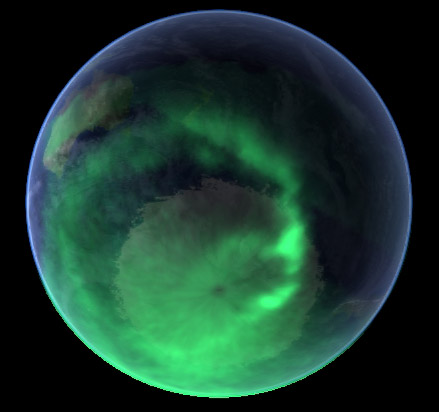Aurora
When energetic charged particles enter the earth's atmosphere from the solar wind, they tend to be channeled toward the poles by the magnetic force which causes them to spiral around the magnetic field lines of the earth. They are energetic enough to ionize air molecules, so a considerable number of atoms and molecules are elevated to excited states. When they make the transition back to their ground states they emit light characteristic of the atoms and molecules. Red and green light emitted from oxygen atoms is a constituent of the light seen at the poles. Atmospheric nitrogen also plays a role. An example of the colors that might be visible can be found by observing the nitrogen spectrum. Near the north pole the light show is called the aurora borealis and near the south pole it is called aurora australis.
|
A polar satellite captured images of aurora over the South Pole of the Earth. UV photographs of Jupiter indicate that auroral phenomena occur in its polar regions. Images of Saturn aurora show a very active pulsating pattern. |

|
Atmospheric optics concepts
| HyperPhysics***** Light and Vision | R Nave |

